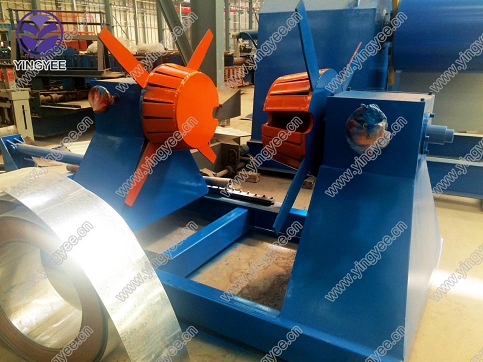
Adjusting Size on PLC-Controlled C and Z Purlin Machines
In the ever-evolving construction and manufacturing industry, efficiency and precision are paramount. One of the critical innovations designed to meet these needs is the PLC-controlled C and Z purlin machine. These machines are specifically engineered for producing high-quality purlins that are essential for structural frameworks in various buildings. However, to maximize productivity and ensure optimal results, understanding how to adjust sizes effectively is crucial.
Understanding PLC Technology
PLC, or Programmable Logic Controller, is a robust digital computer used for automation of industrial processes. In the context of C and Z purlin machines, PLC technology enables precise control over the manufacturing process, ensuring that each purlin is produced to the exact specifications required by engineers and architects. This technology allows for automation in changing sizes and dimensions of purlins quickly and efficiently, catering to varying project requirements.
Importance of Size Adjustment
The ability to adjust sizes on C and Z purlin machines is vital for several reasons. Construction projects often require different sizes of purlins depending on the design and load-bearing needs. A machine that can effortlessly transition between sizes saves time, reduces material waste, and enhances the overall productivity of the manufacturing process. Furthermore, having a flexible machine that can accommodate custom orders means manufacturers can better serve their clients, ensuring timely deliveries and meeting specific project demands.
Steps for Size Adjustment
1. Programming the PLC The first step in adjusting the size on a PLC-controlled purlin machine involves programming the PLC settings. This is usually done through an HMI (Human-Machine Interface), where operators can input the desired dimensions. These inputs can include variables such as width, height, and thickness of the purlins.

2. Setting Up the Machine Once the PLC is programmed, it’s essential to adjust the machine's mechanical components correspondingly. This may involve repositioning rollers, adjusting feed lengths, and changing the cutting blades to align with the new size specifications. The key advantage of PLC technology is that these adjustments can often be carried out at the push of a button or via software commands, minimizing downtime.
3. Calibrating for Accuracy After making physical adjustments to the machine, a calibration process is needed to ensure accuracy. This includes running a test batch of purlins to verify the dimensions. If discrepancies are found, further fine-tuning may be necessary. PLC systems often include feedback mechanisms that can assist in this calibration by monitoring the output dimensions and making automatic adjustments as needed.
4. Final Quality Control Once the machine has been adjusted and calibrated, it’s crucial to conduct final quality control checks. This ensures that each produced purlin meets the specified standards. Modern PLC systems can integrate quality control checks directly into the manufacturing process, automatically stopping production if measurements fall outside the designated tolerances.
Benefits of Using PLC-CONTROLLED Machines
The advantages of using PLC-controlled C and Z purlin machines extend beyond just size adjustment. They offer improved consistency and repeatability in production, reduced labor costs by automating many manual processes, and enhanced safety by minimizing human intervention in machine operations. Additionally, these machines are capable of producing complex profiles and provide the flexibility required by today’s fluctuating market demands.
Conclusion
Adjusting sizes on PLC-controlled C and Z purlin machines is a critical skill in the modern manufacturing landscape. By leveraging the capabilities of PLC technology, manufacturers can efficiently adapt to various project requirements, ensuring high-quality output with minimal waste. As construction demands continue to evolve, mastering these adjustments will play a significant role in maintaining competitive advantage and delivering exceptional results in the industry. Whether for standard build structures or unique architectural designs, the importance of accurate size adjustments cannot be overstated.